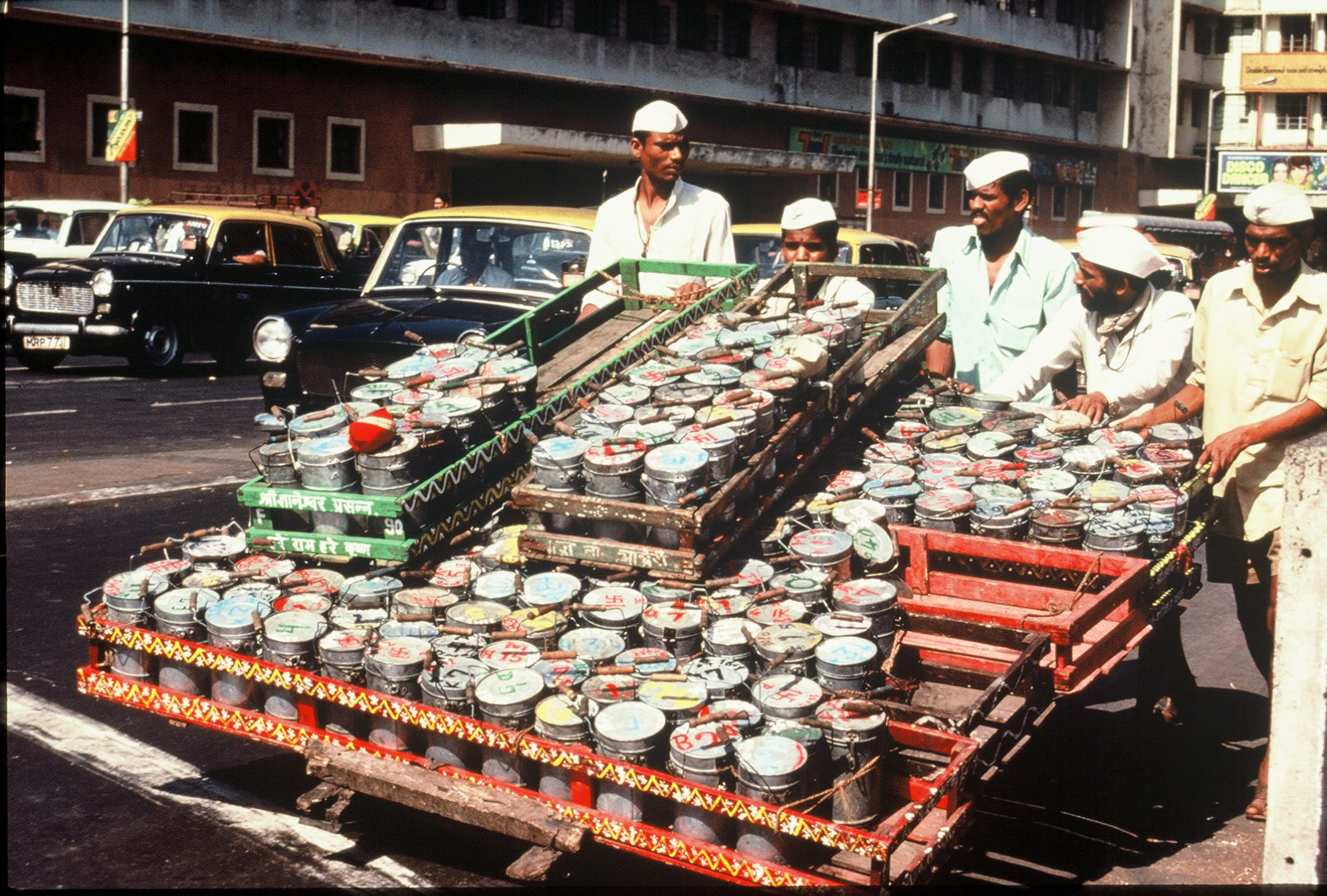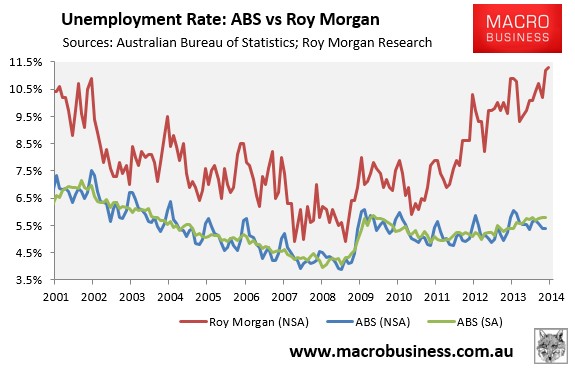Fewer Australian women under the age of 20 are having babies than they were a decade earlier, according to the Australian Bureau of Statistics (ABS).
publication shows that in 2012, 11,420 babies were born to teenage mothers, down from 12,932 just a few years earlier in 2008.
Director of Demography, Bjorn Jarvis, said the fertility rate of teenage mothers has decreased to 16.1 babies per 1000 women in 2012, down from 17.4 in 2002.
"In contrast, we have seen the number of births to mothers over 40 continue to increase," Mr Jarvis said.
“The total fertility rate in Australia for 2012 was 1.93 babies per woman; higher than the record low of 1.74 in 2001 but still below the recent peak of 2.02 in 2008.
The Northern Territory had the highest fertility rate at 2.21 babies per woman, while the Australian Capital Territory had the lowest at 1.79.
The median age of all mothers was 30.7 years in 2012, whereas the median age of all fathers was 33 years," Mr Jarvis added.
(cat. no. 3301.0). State, territory and sub-state information is also available for free download from the ABS website (
<tbody>
[TD="class: DefaultTextBold, width: 100%, colspan: 6"]
BIRTHS, SUMMARY STATISTICS
[/TD]
[TD="class: TableText, width: 100%, colspan: 6"]
[/TD]
[TD="width: 30%"]
[/TD]
[TD="width: 19%"]
2002
[/TD]
[TD="width: 12%"]
2011
[/TD]
[TD="class: TableTextBold, width: 13%"]
2012(a)
[/TD]
[TD="class: TableTextBold, width: 13%"]
Change (%) 2002–2012
[/TD]
[TD="class: TableTextBold, width: 13%"]
Change (%) 2011–2012
[/TD]
[TD="class: TableText, width: 100%, colspan: 6"]
[/TD]
[TD="class: TableText, width: 49%, colspan: 2"]
Australia
(b)
[/TD]
[TD="width: 12%"]
[/TD]
[TD="width: 13%"]
[/TD]
[TD="width: 13%"]
[/TD]
[TD="width: 13%"]
[/TD]
[TD="width: 30%"]
Births (no.)
[/TD]
[TD="class: TableText, width: 19%"]
250 988
[/TD]
[TD="class: TableText, width: 12%"]
301 617
[/TD]
[TD="class: TableText, width: 13%"]
309 582
[/TD]
[TD="class: TableText, width: 13%"]
23.3
[/TD]
[TD="class: TableText, width: 13%"]
2.6
[/TD]
[TD="width: 30%"]
Total fertility rate(c)
[/TD]
[TD="class: TableText, width: 19%"]
1.771
[/TD]
[TD="class: TableText, width: 12%"]
1.917
[/TD]
[TD="class: TableText, width: 13%"]
1.933
[/TD]
[TD="class: TableText, width: 13%"]
[/TD]
[TD="class: TableText, width: 13%"]
[/TD]
[TD="width: 30%"]
Median age of mother (years)
[/TD]
[TD="class: TableText, width: 19%"]
30.2
[/TD]
[TD="class: TableText, width: 12%"]
30.6
[/TD]
[TD="class: TableText, width: 13%"]
30.7
[/TD]
[TD="class: TableText, width: 13%"]
[/TD]
[TD="class: TableText, width: 13%"]
[/TD]
[TD="width: 30%"]
Median age of father (years)
[/TD]
[TD="class: TableText, width: 19%"]
32.5
[/TD]
[TD="class: TableText, width: 12%"]
33.0
[/TD]
[TD="class: TableText, width: 13%"]
33.0
[/TD]
[TD="class: TableText, width: 13%"]
[/TD]
[TD="class: TableText, width: 13%"]
[/TD]
[TD="width: 100%, colspan: 6"]
[/TD]
[TD="width: 100%, colspan: 6"]
New South Wales
[/TD]
[TD="width: 30%"]
Births (no.)
[/TD]
[TD="class: TableText, width: 19%"]
86 583
[/TD]
[TD="class: TableText, width: 12%"]
99 054
[/TD]
[TD="class: TableText, width: 13%"]
98 508
[/TD]
[TD="class: TableText, width: 13%"]
13.8
[/TD]
[TD="class: TableText, width: 13%"]
-0.6
[/TD]
[TD="width: 30%"]
Total fertility rate(c)
[/TD]
[TD="class: TableText, width: 19%"]
1.813
[/TD]
[TD="class: TableText, width: 12%"]
1.963
[/TD]
[TD="class: TableText, width: 13%"]
1.932
[/TD]
[TD="class: TableText, width: 13%"]
[/TD]
[TD="class: TableText, width: 13%"]
[/TD]
[TD="width: 30%"]
Median age of mother (years)
[/TD]
[TD="class: TableText, width: 19%"]
30.3
[/TD]
[TD="class: TableText, width: 12%"]
30.9
[/TD]
[TD="class: TableText, width: 13%"]
30.9
[/TD]
[TD="class: TableText, width: 13%"]
[/TD]
[TD="class: TableText, width: 13%"]
[/TD]
[TD="width: 30%"]
Median age of father (years)
[/TD]
[TD="class: TableText, width: 19%"]
32.6
[/TD]
[TD="class: TableText, width: 12%"]
33.3
[/TD]
[TD="class: TableText, width: 13%"]
33.3
[/TD]
[TD="class: TableText, width: 13%"]
[/TD]
[TD="class: TableText, width: 13%"]
[/TD]
[TD="width: 100%, colspan: 6"]
[/TD]
[TD="class: TableText, width: 100%, colspan: 6"]
Victoria
[/TD]
[TD="width: 30%"]
Births (no.)
[/TD]
[TD="width: 19%"]
61 478
[/TD]
[TD="width: 12%"]
71 444
[/TD]
[TD="width: 13%"]
77 405
[/TD]
[TD="width: 13%"]
25.9
[/TD]
[TD="width: 13%"]
8.3
[/TD]
[TD="width: 30%"]
Total fertility rate(c)
[/TD]
[TD="class: TableText, width: 19%"]
1.697
[/TD]
[TD="class: TableText, width: 12%"]
1.778
[/TD]
[TD="class: TableText, width: 13%"]
1.891
[/TD]
[TD="class: TableText, width: 13%"]
[/TD]
[TD="class: TableText, width: 13%"]
[/TD]
[TD="width: 30%"]
Median age of mother (years)
[/TD]
[TD="class: TableText, width: 19%"]
31.0
[/TD]
[TD="class: TableText, width: 12%"]
31.4
[/TD]
[TD="class: TableText, width: 13%"]
31.3
[/TD]
[TD="class: TableText, width: 13%"]
[/TD]
[TD="class: TableText, width: 13%"]
[/TD]
[TD="width: 30%"]
Median age of father (years)
[/TD]
[TD="class: TableText, width: 19%"]
33.0
[/TD]
[TD="class: TableText, width: 12%"]
33.6
[/TD]
[TD="class: TableText, width: 13%"]
33.5
[/TD]
[TD="class: TableText, width: 13%"]
[/TD]
[TD="class: TableText, width: 13%"]
[/TD]
[TD="width: 100%, colspan: 6"]
[/TD]
[TD="width: 100%, colspan: 6"]
Queensland
[/TD]
[TD="width: 30%"]
Births (no.)
[/TD]
[TD="width: 19%"]
47 771
[/TD]
[TD="width: 12%"]
63 253
[/TD]
[TD="width: 13%"]
63 837
[/TD]
[TD="width: 13%"]
33.6
[/TD]
[TD="width: 13%"]
0.9
[/TD]
[TD="width: 30%"]
Total fertility rate(c)
[/TD]
[TD="width: 19%"]
1.814
[/TD]
[TD="width: 12%"]
2.017
[/TD]
[TD="width: 13%"]
1.997
[/TD]
[TD="width: 13%"]
[/TD]
[TD="width: 13%"]
[/TD]
[TD="width: 30%"]
Median age of mother (years)
[/TD]
[TD="width: 19%"]
29.5
[/TD]
[TD="width: 12%"]
29.8
[/TD]
[TD="width: 13%"]
29.8
[/TD]
[TD="width: 13%"]
[/TD]
[TD="width: 13%"]
[/TD]
[TD="width: 30%"]
Median age of father (years)
[/TD]
[TD="width: 19%"]
31.7
[/TD]
[TD="width: 12%"]
32.0
[/TD]
[TD="width: 13%"]
32.0
[/TD]
[TD="width: 13%"]
[/TD]
[TD="width: 13%"]
[/TD]
[TD="width: 100%, colspan: 6"]
[/TD]
[TD="width: 100%, colspan: 6"]
South Australia
[/TD]
[TD="width: 30%"]
Births (no.)
[/TD]
[TD="width: 19%"]
17 665
[/TD]
[TD="width: 12%"]
19 892
[/TD]
[TD="width: 13%"]
20 433
[/TD]
[TD="width: 13%"]
15.7
[/TD]
[TD="width: 13%"]
2.7
[/TD]
[TD="width: 30%"]
Total fertility rate(c)
[/TD]
[TD="width: 19%"]
1.735
[/TD]
[TD="width: 12%"]
1.868
[/TD]
[TD="width: 13%"]
1.898
[/TD]
[TD="width: 13%"]
[/TD]
[TD="width: 13%"]
[/TD]
[TD="width: 30%"]
Median age of mother (years)
[/TD]
[TD="width: 19%"]
30.4
[/TD]
[TD="width: 12%"]
30.3
[/TD]
[TD="width: 13%"]
30.3
[/TD]
[TD="width: 13%"]
[/TD]
[TD="width: 13%"]
[/TD]
[TD="width: 30%"]
Median age of father (years)
[/TD]
[TD="width: 19%"]
32.6
[/TD]
[TD="width: 12%"]
32.7
[/TD]
[TD="width: 13%"]
32.6
[/TD]
[TD="width: 13%"]
[/TD]
[TD="width: 13%"]
[/TD]
[TD="width: 100%, colspan: 6"]
[/TD]
[TD="width: 100%, colspan: 6"]
Western Australia
[/TD]
[TD="width: 30%"]
Births (no.)
[/TD]
[TD="width: 19%"]
23 601
[/TD]
[TD="width: 12%"]
32 259
[/TD]
[TD="width: 13%"]
33 627
[/TD]
[TD="width: 13%"]
42.5
[/TD]
[TD="width: 13%"]
4.2
[/TD]
[TD="width: 30%"]
Total fertility rate(c)
[/TD]
[TD="width: 19%"]
1.699
[/TD]
[TD="width: 12%"]
1.918
[/TD]
[TD="width: 13%"]
1.913
[/TD]
[TD="width: 13%"]
[/TD]
[TD="width: 13%"]
[/TD]
[TD="width: 30%"]
Median age of mother (years)
[/TD]
[TD="width: 19%"]
29.9
[/TD]
[TD="width: 12%"]
30.3
[/TD]
[TD="width: 13%"]
30.3
[/TD]
[TD="width: 13%"]
[/TD]
[TD="width: 13%"]
[/TD]
[TD="width: 30%"]
Median age of father (years)
[/TD]
[TD="width: 19%"]
32.2
[/TD]
[TD="width: 12%"]
32.7
[/TD]
[TD="width: 13%"]
32.7
[/TD]
[TD="width: 13%"]
[/TD]
[TD="width: 13%"]
[/TD]
[TD="width: 100%, colspan: 6"]
[/TD]
[TD="width: 100%, colspan: 6"]
Tasmania
[/TD]
[TD="width: 30%"]
Births (no.)
[/TD]
[TD="width: 19%"]
6 003
[/TD]
[TD="width: 12%"]
6 608
[/TD]
[TD="width: 13%"]
6 168
[/TD]
[TD="width: 13%"]
2.7
[/TD]
[TD="width: 13%"]
-6.7
[/TD]
[TD="width: 30%"]
Total fertility rate(c)
[/TD]
[TD="width: 19%"]
1.968
[/TD]
[TD="width: 12%"]
2.155
[/TD]
[TD="width: 13%"]
2.036
[/TD]
[TD="width: 13%"]
[/TD]
[TD="width: 13%"]
[/TD]
[TD="width: 30%"]
Median age of mother (years)
[/TD]
[TD="width: 19%"]
28.9
[/TD]
[TD="width: 12%"]
29.4
[/TD]
[TD="width: 13%"]
29.5
[/TD]
[TD="width: 13%"]
[/TD]
[TD="width: 13%"]
[/TD]
[TD="width: 30%"]
Median age of father (years)
[/TD]
[TD="width: 19%"]
31.3
[/TD]
[TD="width: 12%"]
31.8
[/TD]
[TD="width: 13%"]
31.8
[/TD]
[TD="width: 13%"]
[/TD]
[TD="width: 13%"]
[/TD]
[TD="width: 100%, colspan: 6"]
[/TD]
[TD="width: 100%, colspan: 6"]
Northern Territory
[/TD]
[TD="width: 30%"]
Births (no.)
[/TD]
[TD="width: 19%"]
3 724
[/TD]
[TD="width: 12%"]
3 954
[/TD]
[TD="width: 13%"]
4 104
[/TD]
[TD="width: 13%"]
10.2
[/TD]
[TD="width: 13%"]
3.8
[/TD]
[TD="width: 30%"]
Total fertility rate(c)
[/TD]
[TD="width: 19%"]
2.226
[/TD]
[TD="width: 12%"]
2.147
[/TD]
[TD="width: 13%"]
2.206
[/TD]
[TD="width: 13%"]
[/TD]
[TD="width: 13%"]
[/TD]
[TD="width: 30%"]
Median age of mother (years)
[/TD]
[TD="width: 19%"]
28.1
[/TD]
[TD="width: 12%"]
28.5
[/TD]
[TD="width: 13%"]
28.6
[/TD]
[TD="width: 13%"]
[/TD]
[TD="width: 13%"]
[/TD]
[TD="width: 30%"]
Median age of father (years)
[/TD]
[TD="width: 19%"]
31.6
[/TD]
[TD="width: 12%"]
31.5
[/TD]
[TD="width: 13%"]
31.4
[/TD]
[TD="width: 13%"]
[/TD]
[TD="width: 13%"]
[/TD]
[TD="width: 100%, colspan: 6"]
[/TD]
[TD="width: 100%, colspan: 6"]
Australian Capital Territory
[/TD]
[TD="width: 30%"]
Births (no.)
[/TD]
[TD="width: 19%"]
4 112
[/TD]
[TD="width: 12%"]
5 121
[/TD]
[TD="width: 13%"]
5 461
[/TD]
[TD="width: 13%"]
32.8
[/TD]
[TD="width: 13%"]
6.6
[/TD]
[TD="width: 30%"]
Total fertility rate(c)
[/TD]
[TD="width: 19%"]
1.571
[/TD]
[TD="width: 12%"]
1.735
[/TD]
[TD="width: 13%"]
1.794
[/TD]
[TD="width: 13%"]
[/TD]
[TD="width: 13%"]
[/TD]
[TD="width: 30%"]
Median age of mother (years)
[/TD]
[TD="width: 19%"]
30.7
[/TD]
[TD="width: 12%"]
31.5
[/TD]
[TD="width: 13%"]
31.3
[/TD]
[TD="width: 13%"]
[/TD]
[TD="width: 13%"]
[/TD]
[TD="width: 30%"]
Median age of father (years)
[/TD]
[TD="width: 19%"]
32.8
[/TD]
[TD="width: 12%"]
33.6
[/TD]
[TD="width: 13%"]
33.4
[/TD]
[TD="width: 13%"]
[/TD]
[TD="width: 13%"]
[/TD]
[TD="class: TableText, width: 100%, colspan: 6"]
[/TD]
[TD="class: TableText, width: 100%, colspan: 6"]
(a) Fertility rates for 2012 have been calculated using preliminary 30 June 2012 Estimated Resident Population based on results from the 2011 Census.
[/TD]
[TD="class: TableText, width: 100%, colspan: 6"]
(b) Includes Other Territories
[/TD]
[TD="class: TableText, width: 100%, colspan: 6"]
(c) Babies per woman. The total fertility rate represents the average number of babies that a woman could expect to bear during her reproductive lifetime if current fertility rates continue.
[/TD]
</tbody>







